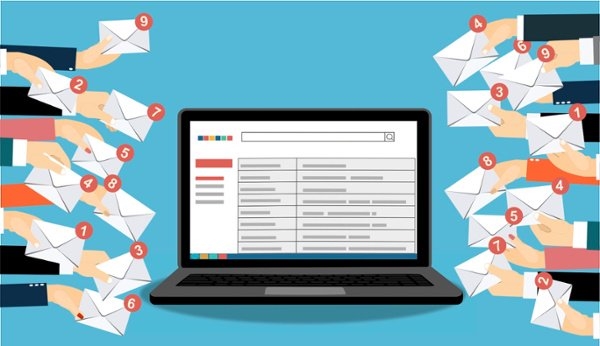— March 19, 2019
Much of the discussion when it comes to email marketing is what to do to make your email communication the most effective it can be. But a lot can be learned from considering what not do with your email marketing. Everything from missteps that lead to spam to content mistakes, to customer journey errors, should be looked at before creating future email marketing campaigns.

Continue reading for a breakdown on eight email mistakes that can adversely affect your marketing.
“Spammy” Mistakes
1. Buying Lists
To have email permission, by law, your recipient must have agreed to receive your messages or offers. That means when you buy a list of emails from a third-party, you’re not granted this permission.
The likelihood of your email being marked as spam rises tenfold when you send communication to purchased lists. Internet Service Providers (ISP) – as well as users – can detect when an email is being sent without permission. In to the spam folder it goes, along with your relevant information.
2. No Contact or Unsubscribe Info

Not only is not including unsubscribe or contact information in your email considered “spammy,” it’s illegal. The CAN-SPAM Act of 2003 imposes specific legal requirements on commercial emails, and this is one of them.
3. Unauthenticated Sender ID
When crafting your “From” field names, use clear, straightforward names and addresses. These can be easily created, and authenticated, in email platforms such as HubSpot. HubSpot will automatically authenticate your sender identity when you create a new “From” field name. You’ll likely only have issues if you try to manually set these up without the help of an email service.
Content Mistakes
4. No Pre-Text
The preheader of your email – or pretext – is the display text next to or around your subject line. It is a critical component of a good email, as it can give some quick insight into what your email is about. The pretext of your email gives you, on average, 50-100 characters to use in conjunction with your subject line, further engaging your readers to open your email.
If you’re unsure of what to add in your pre-text, you could elaborate on your subject line, as mentioned above. You could also tease an incentive, personalize your email, or write something funny that relates to the body of your email. Whatever you choose, try and make the copy concise and exciting.
5. Too Lengthy
Long, wordy emails are not effective. Consider this: you could pack it with paragraphs detailing amazing benefits, but if it becomes too overwhelming to read, your users will likely pass. That means your most important information could potentially get lost in the fold. And why is this? According to the Washington Post, the average American worker spends 4.1 hours reading work email. Another long, drawn-out email is not what they want.
So, while email is a valid form of communication, it can be draining for workers. That’s why you should strive to make your emails short and succinct.
6. Poor Subject Lines
Are your subject lines a second thought to you? Because they shouldn’t be. According to research done by Blue Corona, 47% of email recipients decide whether or not to open an email based on the subject line alone.
You could spend hours crafting the perfect body of your email – all for not, if you don’t put needed attention in your subject line as well.
So, what does that mean? Your subject lines must stand out, and capture your readers’ attention. To do this, try and use active, intriguing language that reflects the content of the email. Another tip is to make sure the subject line isn’t too long; otherwise, it may get cut off in your readers’ inboxes. According to HubSpot, most email providers don’t show your full subject line once you pass 25 characters. If you need help determining how to write a subject line for your audiences, try A/B testing two to see which performs better, then following the winning format for future sends.
Customer Journey Mistakes
7. Emails That Move People Down The Funnel Too Quickly
It’s a often-discussed ideal that email is an effective part of your marketing strategy. That is when it reflects the right stage of your customer’s buyer journey.
You could write a compelling email, equipped with the right subject line and design, but have it fall flat if it doesn’t resonate with where your buyer is at in their journey. If they just signed up for your newsletter and you send them decision-related content such as demo guides, then they likely won’t respond accordingly. You’ve wasted your time, as well as your prospective clients’.
8. Not Segmenting Your Audiences
Another unfortunate error that can derail an otherwise great email is sending it to the wrong target audience. This error happens when you don’t correctly segment your audiences into different email lists and instead send your emails to everyone who’s signed up for your email correspondence. When you don’t segment, the incorrect buyer persona could receive an email that doesn’t pertain to any of their pain points, leaving them confused and unmotivated to engage with any future emails.
Final Thoughts
Thinking about mistakes is not something marketers want to do repeatedly – but when you take specific email errors in consideration beforehand, you’re more likely not to make them. You can gain knowledge and begin putting better habits into motion.
Digital & Social Articles on Business 2 Community
(86)






